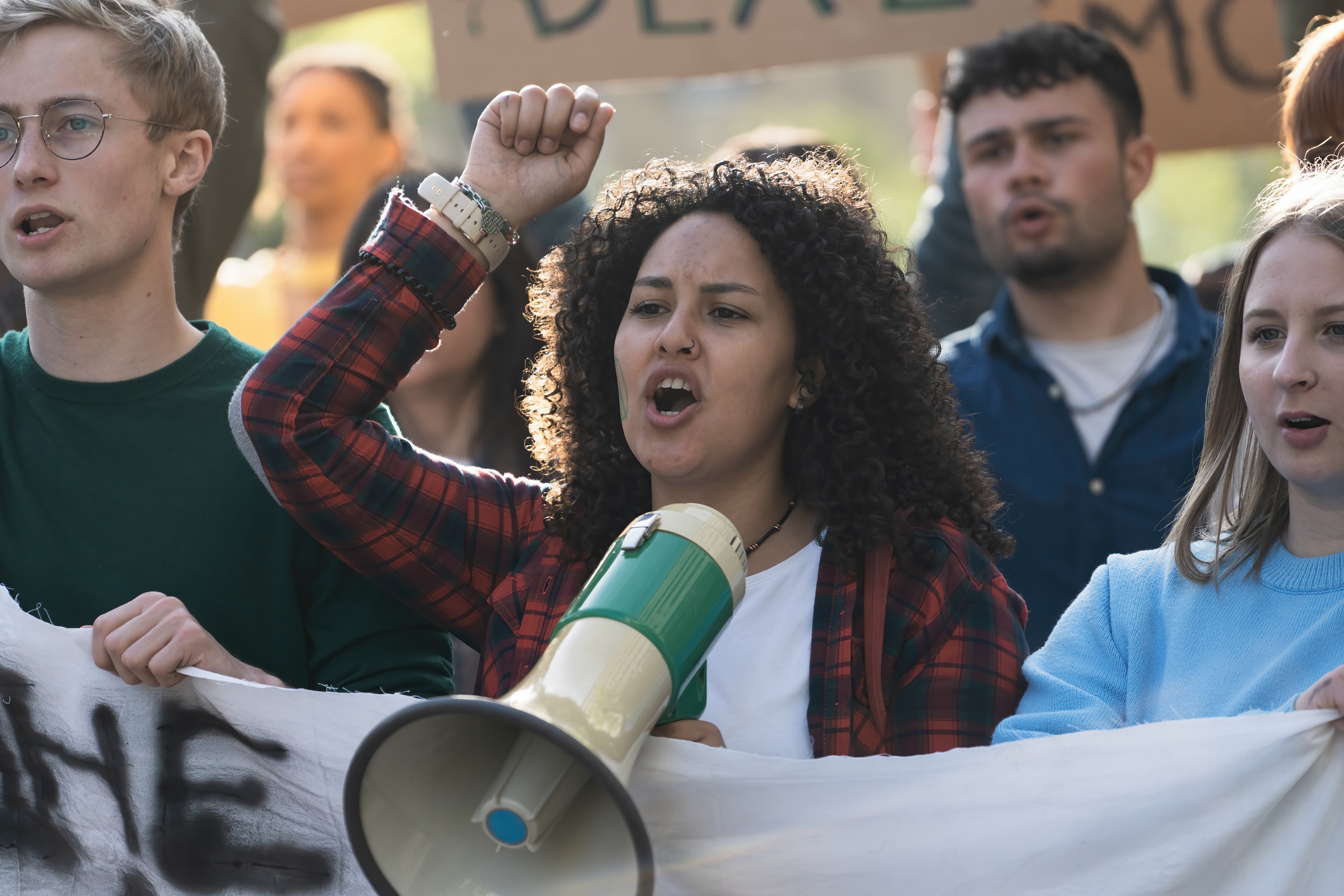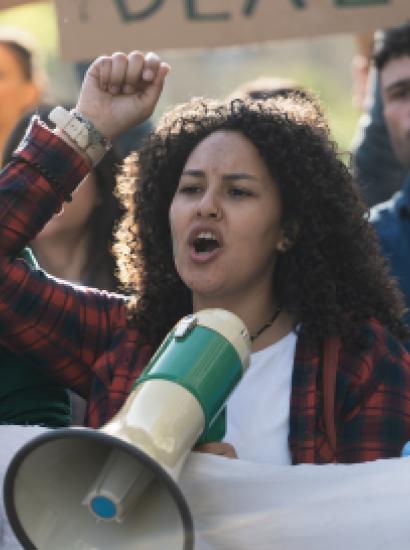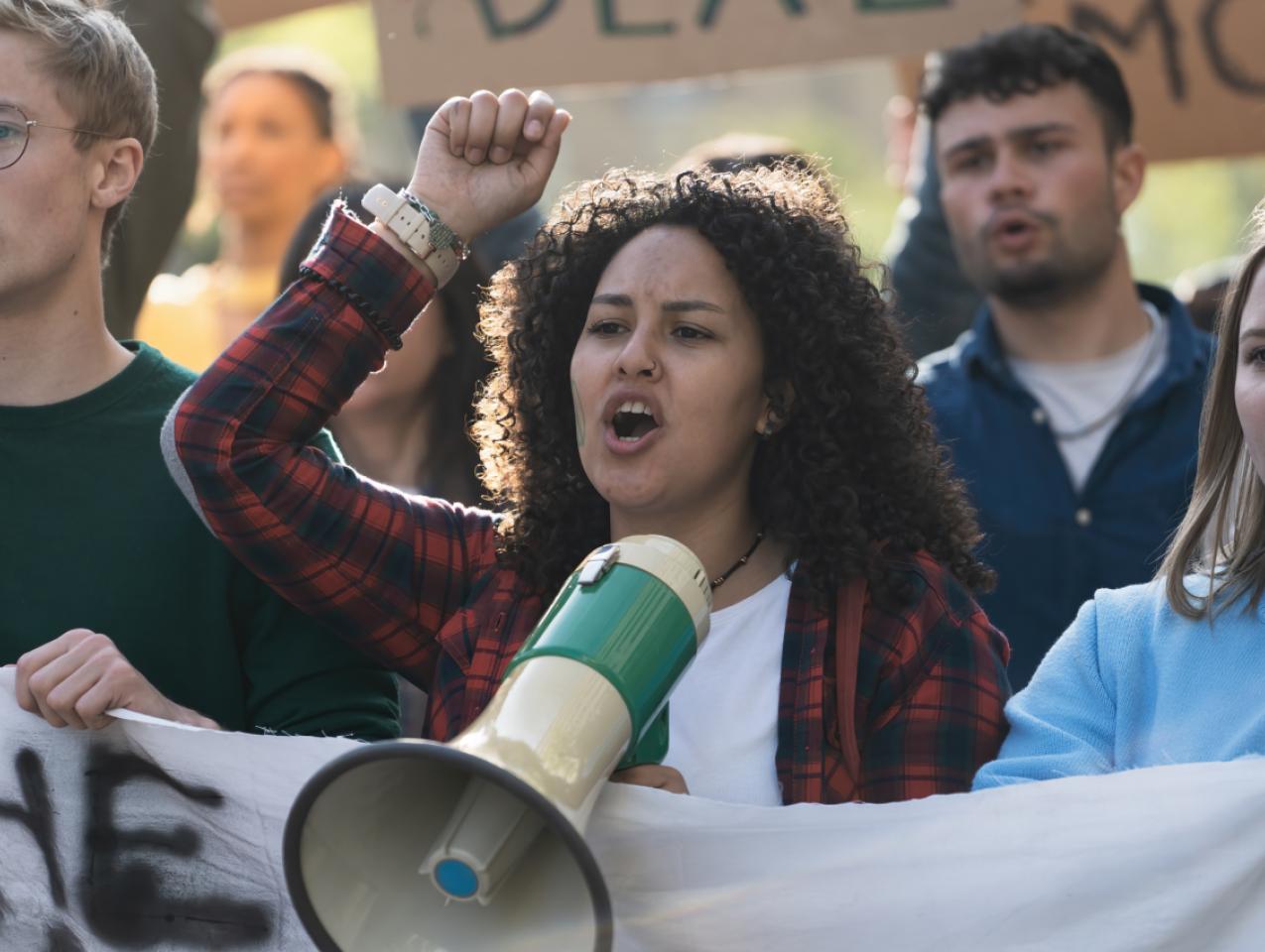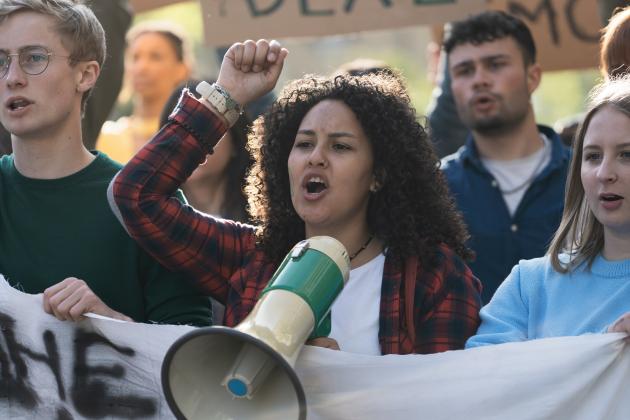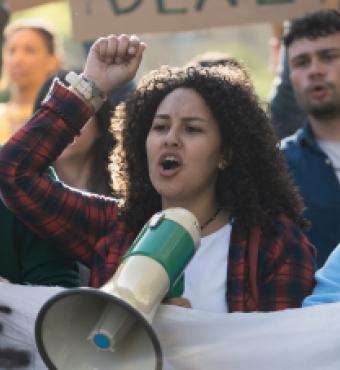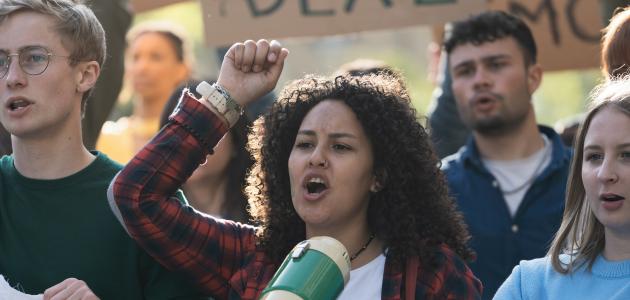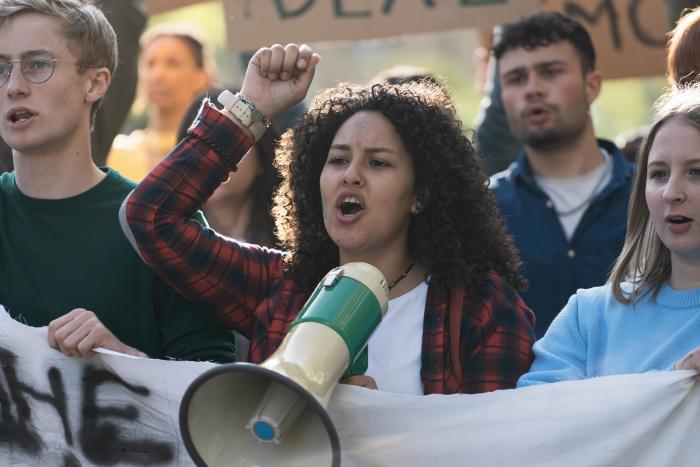A recent debacle in the House of Representatives featured three university presidents flailing about, trying to explain their reluctance to condemn calls for the genocide of Jewish and Israeli people made by Hamas supporters and pro-Palestine activists more generally. Enough has been said about the hypocrisy of their positions—taking stands on just about every fashionable left-wing cause while remaining, as Peggy Noonan bluntly observes, stubbornly silent on the brutal rapes and other atrocities that Hamas terrorists committed against Israeli and other women on that fateful October 7. And the redoubtable Heather Mac Donald has insisted that the presidents should be condemned for just such hypocrisy, but not for fidelity to the ideals of the First Amendment as applied on campus.
Yet there is a second lesson to be gathered out of this wreckage: how a common but wrong understanding of the First Amendment creates a flawed framework that has facilitated the crisis of public confidence in elite universities. Start with the text: “Congress shall make no law . . . abridging the freedom of speech, or of the press.” Short does not mean simple. The first term, “Congress,” suggests that this amendment is directed toward Congress—but not to the courts or the states. But that narrow construction has not held firm. After the adoption of the Fourteenth Amendment, Gitlow v. New York (1925) incorporated the First Amendment against the states, and New York Times v. Sullivan (1964) applied it to much state common law rules of defamation. But even after both these expansions, the First Amendment does not apply to private universities.
Yet virtually all the congressional testimony of the three presidents—Presidents Claudine Gay of Harvard, Sally Kornbluth of MIT, and (now former) Liz Magill of Penn—proceeded as if these universities were bound, if not by the text of the First Amendment, then, as Alan Dershowitz, like Mac Donald, has wrongly insisted, by its “spirit”—an approach which requires universities to “balance” conflicting interests in speech and campus security just as if the First Amendment did apply. And FIRE (the Foundation for Individual Rights and Expression), long a stout defender against harassment in universities, likewise insists that in order to suppress speech, “[t]he conduct in question must be targeted, unwelcome, and ‘so severe, pervasive, and objectively offensive that it effectively bars the victim’s access to an educational opportunity or benefit.’ ”
Yet danger lurks here. To insist that First Amendment–like rules apply to private universities results in transferring control over campus activities from universities to either the government, as enforcer, or the courts as the referees of last resort. But universities have, or could acquire, information about their local situation to better respond to perceived dangers as they see fit. Thus, one reason to keep the government out is that universities are able to govern themselves. But before Congress, Gay, Kornbluth, and Magill responded in lawyerly fashion and refused to give a direct answer to the prophetic question of Representative Elise Stefanik: “Does calling for the genocide of Jews violate MIT’s code of conduct or rules regarding bullying and harassment? Yes or no?” Kornbluth followed the FIRE line when she said: “If targeted at individuals, not making public statements.” President Gay was equally lawyerly when she replied: “It depends on the context” such that “when it crosses into conduct,” then and only then can something be done.
It may well be that legally to win in court, a person has to show that he or she was singled out for direct victimization or personal threats, and thus could not sue for broadsides that were directed at everyone and no one at the same time. And similarly, the troubled line between speech and conduct (which of the two is picketing or demonstrating, for example) may also separate criminal conduct from legally protected protests. Surely, no university may make the law for the world, but each university can certainly set out whatever rules for speech and decorum it regards as appropriate and adjust its policies when necessary.
Thus, if Harvard president Gay had not regarded herself as an innocent bystander to the activities on the Harvard campus, she would never have tolerated the infamous Instagram post, ostensibly signed by over thirty Harvard groups, that stated: “We, the undersigned student organizations, hold the Israeli regime entirely responsible for all unfolding violence.” FIRE says that “it’s hard to see how the single utterance Rep. Elise Stefanik asked about during the hearing—no matter how offensive—would qualify given this pervasiveness requirement.” Wrong. Those words were the shot heard round the world. By design, the phrase “entirely responsible” upsets the entire moral order by foisting on helpless victims the vicious sins of the terrorists, which has now become a trope that rocks the nation. The “context” that matters is that statements like this, if not immediately squashed, will lead to more anti-Semitism on campus—including acts of violence and intimidation. In this world, there is no such thing as a single utterance, especially since Harvard and other universities were well aware of the rising anti-Semitism of the cancel culture before this incident and should have taken firm measures against it, leading to the immediate removal of the message from campus servers and an immediate investigation with a view of imposing sanctions proportionate to the harm.
None of that happened. Instead, Harvard, like other universities, draped itself in the tattered garments of official neutrality. All too often, institutional cowardice passes for high principle by referencing the notable University of Chicago Kalven Report of 1967, whose most memorable line is that “the university is the home and sponsor of critics; it is not itself the critic.” And that is certainly true about the most controversial issues of our time, including debating feasible solutions to the Israeli-Palestinian conflict. But elsewhere, the Kalven Report stated unequivocally that in times of “crisis,” “it becomes the obligation of the university as an institution to oppose such measures and actively to defend its interests and its values.” Obligation! The values mentioned in the Kalven Report are teaching and research, and these cannot be conducted when campus become the home of vile speeches, ominous demonstrations, and threatening acts and gestures. Indeed, every university campus is entitled to close its grounds and facilities to all such demonstrations if administrators in their sole judgment think it appropriate. And it was just this failure to condemn the inexcusable that has led to the furious backlash against the three feckless presidents.
Nor is it the case that Harvard and virtually all other progressive institutions are oblivious to fears of future harm from the wrong kind of speech. But in its case, it reserves that condemnation for isolated statements and questions that should be tolerated on every campus. Dictatorial Harvard uses an indefensibly wide definition of violence—separated from any threat of or use of force—in its own regulations announcing that students “may be subject to disciplinary proceedings for ‘sizeism,’ ‘fatphobia,’ ‘cisheterosexism,’ ‘ableism,’ ” or categories of speech that “perpetuate violence.” For good measure, “using the wrong pronouns” constitutes “abuse.” With these bone-chilling ukases, Harvard has engaged in the worst form of viewpoint discrimination by threatening sanctions for ordinary speech not approved by campus czars while simultaneously giving a pass to the purest form of hate speech from supporters of Palestine.
An important parallel question is what happens when and if the same kind of conduct takes place in public institutions. The New York Times columnist Michelle Goldberg put that question to Erwin Chemerinsky, who is both the dean at UC-Berkeley School of Law and a prominent First Amendment scholar. She asked what would happen if the pending House of Representatives resolution stating “anti-Zionism is anti-Semitism” were to cause colleges to “enforce a ban on anti-Semitism.” He responded: “I don’t know how it could possibly be at a public university without violating the First Amendment.” Well, here’s how. The prohibition in the First Amendment is at its height when the government seeks to regulate private institutions. But it is a whole new ballgame when the government seeks to manage its own internal operations, where it needs greater discretion to run its affairs, so that under the basic rule in Connick v. Myers (1983), the inevitable balancing tests take hold. The employer prevents its employees from attacking the policies of the offices in which they work, but employees may speak out elsewhere on general matters of public concern. A public university also has lots of employees and students, which may raise many difficult legal distinctions about targeted speech and harmful conduct, all of which would make it ludicrous to try to prevent that speech from taking place. And I dare say that even private universities should and would not only tolerate but encourage debates on this question, as they have done for decades.
But tellingly, Goldberg did not ask, and Chemerinsky did not answer, the bigger question: what should a public university do in response to the Harvard Instagram post? Try this easy answer: respond to this instant crisis with the level of force and moral clarity that is unambiguously needed in private universities.







